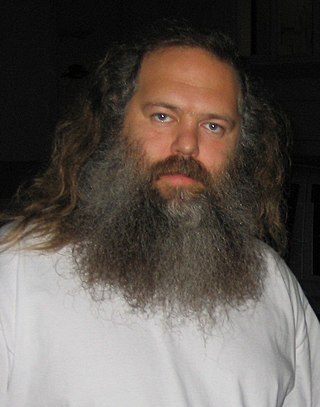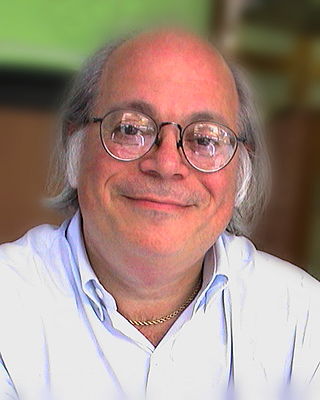
Audio mixing is the process by which multiple sounds are combined into one or more audio channels. In the process, a source's volume level, frequency content, dynamics, and panoramic position are manipulated or enhanced. This practical, aesthetic, or otherwise creative treatment is done in order to produce a finished version that is appealing to listeners.

Post-production is part of the process of filmmaking, video production, audio production, and photography. Post-production includes all stages of production occurring after principal photography or recording individual program segments.

A production sound mixer, location sound recordist, location sound engineer, or simply sound mixer is the member of a film crew or television crew responsible for recording all sound recording on set during the filmmaking or television production using professional audio equipment, for later inclusion in the finished product, or for reference to be used by the sound designer, sound effects editors, or Foley artists. This requires choice and deployment of microphones, choice of recording media, and mixing of audio signals in real time.
A movie camera is a type of photographic camera that rapidly takes a sequence of photographs, either onto film stock or an image sensor, in order to produce a moving image to display on a screen. In contrast to the still camera, which captures a single image at a time, the movie camera takes a series of images by way of an intermittent mechanism or by electronic means; each image is a frame of film or video. The frames are projected through a movie projector or a video projector at a specific frame rate to show the moving picture. When projected at a high enough frame rate, the persistence of vision allows the eyes and brain of the viewer to merge the separate frames into a continuous moving picture.

Frederick Jay Rubin is an American record producer. He is a co-founder of Def Jam Recordings, founder of American Recordings, and former co-president of Columbia Records.
Sound design is the art and practice of creating soundtracks for a variety of needs. It involves specifying, acquiring or creating auditory elements using audio production techniques and tools. It is employed in a variety of disciplines including filmmaking, television production, video game development, theatre, sound recording and reproduction, live performance, sound art, post-production, radio, new media and musical instrument development. Sound design commonly involves performing and editing of previously composed or recorded audio, such as sound effects and dialogue for the purposes of the medium, but it can also involve creating sounds from scratch through synthesizers. A sound designer is one who practices sound design.
The University of Southern California School of Cinematic Arts (SCA) houses seven academic divisions: Film & Television Production; Cinema & Media Studies; John C. Hench Division of Animation + Digital Arts; John Wells Division of Writing for Screen & Television; Interactive Media & Games; Media Arts + Practice; Peter Stark Producing Program.

Tony Jay was a British actor. A former member of the Royal Shakespeare Company, he was known for his voice work in radio, animation, film, and video games. Jay was particularly noted for his distinctive raspy baritone voice, which often led to him being cast in villainous or authoritative roles. He was best known as the voice of Claude Frollo in Disney's The Hunchback of Notre Dame (1996), Megabyte in ReBoot (1994–2001), Shere Khan in The Jungle Book 2, the TV series TaleSpin, and the Elder God in the Legacy of Kain series of video games.
Digital asset management (DAM) and the implementation of its use as a computer application is required in the collection of digital assets to ensure that the owner, and possibly their delegates, can perform operations on the data files.
Sync sound refers to sound recorded at the time of the filming of movies. It has been widely used in movies since the birth of sound movies.

Vegas Pro is a professional video editing software package for non-linear editing (NLE). The first release of Vegas Beta was on 11 June 1999. The software is limited to machines running Windows as an operating system.
Audio post-production is all stages of audio production relating to sound produced and synchronized with moving picture. It involves sound design, sound effects, Foley, ADR, sound editing, audio mixing, mastering etc.
Previsualization is the visualizing of scenes or sequences in a movie before filming. It is a concept used in other creative arts, including animation, performing arts, video game design, and still photography. Previsualization typically describes techniques like storyboarding, which uses hand-drawn or digitally-assisted sketches to plan or conceptualize movie scenes.
SOT is an acronym for the phrase sound on tape. It refers to any audio recorded on analog or digital video formats. It is used in scriptwriting for television productions and filmmaking to indicate the portions of the production that will use room tone or other audio from the time of recording, as opposed to audio recorded later.
Videomaker is a magazine publication dedicated to video production. The magazine's publisher and editor, Matthew York, founded the publication with his wife Patrice York, Associate Publisher, to "empower people to make video and to democratize and enrich television."

An audio engineer helps to produce a recording or a live performance, balancing and adjusting sound sources using equalization, dynamics processing and audio effects, mixing, reproduction, and reinforcement of sound. Audio engineers work on the "technical aspect of recording—the placing of microphones, pre-amp knobs, the setting of levels. The physical recording of any project is done by an engineer…"

Bruce Nazarian was an American funk and rock musician, recording artist and music producer from Detroit, Michigan.

Sound Ideas is the archive of one of the largest commercially available sound effects libraries in the world. It has accumulated the sound effects, which it releases in collections by download or on CD and hard drive, through acquisition, exclusive arrangement with movie studios, and in-house production.

Dr Neil Hillman is a British television and feature film sound designer and editor, notable for his work on the Oscar-winning film Lincoln, New York I Love You and Grace of Monaco. Hillman was awarded the World Medal for Sound Design at the New York Festival for the film The 13th Day in 2010 and in November 2010 was awarded the Royal Television Society award for Best Production Craft Skills for Sound Design and Mixing on the film Handle With Care.
Douglas Self is a British electronics engineer and author with a particular interest in audio. He received a first class honours degree in engineering from Cambridge University, and then studied psychoacoustics at Sussex University. He is the author of six books on audio electronics, published by Focal Press. He has also contributed many articles to Wireless World magazine, some of which were compiled into a book along with articles by Peter Baxandall.










